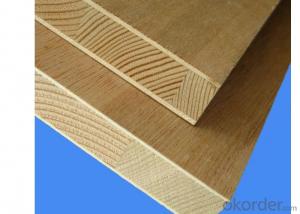Plywood, a versatile and widely used material in construction and furniture making, has always been a topic of interest for DIY enthusiasts, professionals, and homeowners alike. But when it comes to plywood prices, it can be a bit of a puzzle. What exactly determines the cost of this seemingly simple material? Let’s dive in and explore the factors that influence plywood prices, and hopefully, by the end of this article, you’ll have a better understanding of what you’re paying for and how to make the most of your investment.
The Basics of Plywood
Before we get into the nitty-gritty of pricing, let’s start with a quick primer on plywood. Plywood is made from thin layers of wood veneer, called plies, that are glued together under heat and pressure. The orientation of these plies can vary, and this plays a significant role in the strength and flexibility of the final product. Plywood is available in a variety of types, each with its own set of characteristics and price points.
Types of Plywood and Their Prices
The type of plywood you choose will have a direct impact on the price you pay. Here are some common types and what you need to know about their costs:
– Baltic Birch Plywood: Known for its quality and strength, Baltic Birch is a popular choice for furniture making and high-end projects. It’s more expensive than standard plywood due to its superior quality and the fact that it’s imported from Russia and the Baltic region.
– Hardwood Plywood: This type is made from hardwood veneers and is more durable and resistant to wear. It’s pricier than softwood plywood, but it’s worth the investment if you’re looking for a long-lasting material.
– Softwood Plywood: Commonly made from species like pine, spruce, or fir, softwood plywood is more affordable and widely available. It’s suitable for general construction and less demanding applications.
– Marine Plywood: As the name suggests, marine plywood is designed for use in moisture-rich environments. It’s resistant to rot and decay, making it ideal for boat building and outdoor projects. It comes at a higher price due to its specialized properties.
– Furniture-grade Plywood: This is a higher quality plywood, often used for cabinetry and other furniture applications. It’s more expensive due to its smooth surface and better appearance.
Grade of Plywood
The grade of plywood refers to the quality of the wood and the presence of defects. Higher grades have fewer defects and are more expensive. Here’s a breakdown of the common grades:
– A-grade: This is the highest quality plywood with the fewest defects. It’s used for applications where appearance is crucial.
– B-grade: B-grade plywood has more defects but is still suitable for most construction projects. It’s less expensive than A-grade.
– C-grade: C-grade plywood is the lowest quality and is often used for internal structures where appearance doesn’t matter as much. It’s the most affordable option.
Thickness and Size
The thickness and size of the plywood sheet also play a role in the price. Thicker and larger sheets are more expensive due to the increased amount of material used. However, they can also be more cost-effective in the long run if you’re working on a large project and need fewer pieces.
Species of Wood
Different wood species have different prices based on their availability, durability, and aesthetic appeal. For example, plywood made from exotic woods like teak or mahogany will be more expensive than plywood made from more common species.
Manufacturing Process
The way plywood is manufactured can also affect the price. Plywood made using traditional methods with high-quality adhesives and strict quality control will be more expensive, but it ensures a better final product.
Market Demand and Supply
Like any other commodity, the price of plywood is influenced by market demand and supply. When demand is high and supply is low, prices tend to rise. This can be due to various factors such as seasonal demand, economic conditions, or even natural disasters affecting the supply of raw materials.
Sustainability and Environmental Factors
In today’s environmentally conscious world, the sustainability of the plywood production process and the source of the wood can impact the price. Plywood from sustainably managed forests and produced with eco-friendly methods is often more expensive but is preferred by environmentally aware consumers.
Import and Export Regulations
For plywood that is imported or exported, additional costs may be incurred due to tariffs, shipping, and other regulatory requirements. This can add to the overall price of the plywood.
Conclusion
Understanding the cost factors of plywood is crucial for anyone looking to incorporate this material into their projects. By considering the type, grade, thickness, size, species, manufacturing process, market demand, sustainability, and import/export regulations, you can make informed decisions and get the best value for your money. Remember, the cheapest option isn’t always the best in terms of quality and longevity. Investing in higher-quality plywood can save you time, money, and effort in the long run. So, the next time you’re at the lumberyard or browsing online, keep these factors in mind to ensure you’re getting the best plywood for your needs.
Whether you’re a seasoned woodworker or a first-time DIYer, knowing the ins and outs of plywood prices can help you navigate the market with confidence. It’s not just about finding the cheapest option; it’s about finding the right balance between cost, quality, and sustainability. Happy woodworking!

